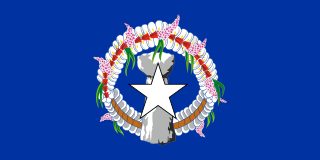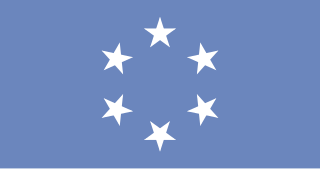| Parent company | University of Guam |
|---|---|
| Country of origin | United States |
| Headquarters location | Mangilao, Guam |
| Publication types | Books |
| Official website | uogpress |
University of Guam Press is a university press affiliated with the University of Guam, located in Mangilao, Guam. [1] Most of the publisher's releases focus on the "peoples and cultures of the Micronesian Islands". [2] The press also manages Proa Publications, the official publishing outlet of Northern Marianas College. [3] The University of Guam Press is currently an affiliate of the Association of University Presses. [4]
The University of Guam Press is an integral part of the Richard Flores Taitano Micronesian Area Research Center (MARC), which holds the most extensive repository of information about Guam and Micronesia. The university extends the MARC’s mission of collecting, preserving, and providing access to reliable and accurate information about the peoples and cultures of the Western Pacific, thereby advancing scholarship and learning in and about the region. [1]
The University of Guam Press has two major publishing imprints: MARC Publications and Taiguini Books. [1]

Guam is an organized, unincorporated territory of the United States in the Micronesia subregion of the western Pacific Ocean. Guam's capital is Hagåtña, and the most populous village is Dededo. It is the westernmost point and territory of the United States, reckoned from the geographic center of the U.S. In Oceania, Guam is the largest and southernmost of the Mariana Islands and the largest island in Micronesia.
The history of Guam starts with the early arrival around 2000 BC of Austronesian people known today as the Chamorro Peoples. The Chamorus then developed a "pre-contact" society, that was colonized by the Spanish in the 17th century. The present American rule of the island began with the 1898 Spanish–American War. Guam's history of colonialism is the longest among the Pacific islands.

Micronesia is a subregion of Oceania, consisting of about 2,000 small islands in the Northwestern Pacific Ocean. It has a close shared cultural history with three other island regions: Maritime Southeast Asia to the west, Polynesia to the east, and Melanesia to the south—as well as with the wider community of Austronesian peoples.

The Northern Mariana Islands, officially the Commonwealth of the Northern Mariana Islands, is an unincorporated territory and commonwealth of the United States consisting of 14 islands in the northwestern Pacific Ocean. The CNMI includes the 14 northernmost islands in the Mariana Archipelago; the southernmost island, Guam, is a separate U.S. territory. The Northern Mariana Islands were listed by the United Nations as a non-self governing territory until 1990.

The Trust Territory of the Pacific Islands (TTPI) was a United Nations trust territory in Micronesia administered by the United States from 1947 to 1994. The Imperial Japanese South Seas Mandate had been seized by the US during the Pacific War, as Japan had administered the territory since the League of Nations gave Japan mandate over the area from Imperial Germany after World War I. However, in the 1930s, Japan left the League of Nations, and then invaded additional lands. During World War II, military control of the islands was disputed, but by the end of the war the islands had come under control of the Allies. The Trust Territory of the Pacific was created to administer the islands as part of the United States, while still under the auspices of the United Nations. Most of the island groups in the territory became independent states, with some degree of ties kept with the United States: the Federated States of Micronesia, Marshall Islands and Palau are today independent states in a Compact of Free Association with the US, while the Northern Mariana Islands remain under US jurisdiction, as an unincorporated territory and commonwealth.

Saipan is the largest island and capital of the Northern Mariana Islands, a commonwealth of the United States in the western Pacific Ocean. According to 2020 estimates by the United States Census Bureau, the population of Saipan was 43,385, a decline of 10% from its 2010 count of 48,220.

Pacific Islanders, Pasifika, Pasefika, Pacificans or rarely Pacificers are the peoples of the Pacific Islands. As an ethnic/racial term, it is used to describe the original peoples—inhabitants and diasporas—of any of the three major subregions of Oceania or any other island located in the Pacific Ocean.

The Mariana Islands, also simply the Marianas, are a crescent-shaped archipelago comprising the summits of fourteen longitudinally oriented, mostly dormant volcanic mountains in the northwestern Pacific Ocean, between the 12th and 21st parallels north and along the 145th meridian east. They lie south-southeast of Japan, west-southwest of Hawaii, north of New Guinea and east of the Philippines, demarcating the Philippine Sea's eastern limit. They are found in the northern part of the western Oceanic sub-region of Micronesia, and are politically divided into two jurisdictions of the United States: the Commonwealth of the Northern Mariana Islands and, at the southern end of the chain, the territory of Guam. The islands were named after the influential Spanish queen Mariana of Austria following their colonization in the 17th century.

The Chamorro people are the Indigenous people of the Mariana Islands, politically divided between the United States territory of Guam and the encompassing Commonwealth of the Northern Mariana Islands in Micronesia, a commonwealth of the US. Today, significant Chamorro populations also exist in several U.S. states, including Hawaii, California, Washington, Texas, Tennessee, Oregon, and Nevada, all of which together are designated as Pacific Islander Americans according to the U.S. Census. According to the 2000 Census, about 64,590 people of Chamorro ancestry live in Guam and another 19,000 live in the Northern Marianas.
The Micronesians or Micronesian peoples are various closely related ethnic groups native to Micronesia, a region of Oceania in the Pacific Ocean. They are a part of the Austronesian ethnolinguistic group, which has an Urheimat in Taiwan.

A latte stone, or simply latte, is a pillar capped by a hemispherical stone capital (tasa) with the flat side facing up. Used as building supports by the ancient Chamorro people, they are found throughout most of the Mariana Islands. In modern times, the latte stone is seen as a sign of Chamorro identity and is used in many different contexts.

Alamagan is an island in the Northern Mariana Islands in the Pacific Ocean, 30 kilometres (16 nmi) north of Guguan, 250 kilometres (135 nmi) north of Saipan, and 60 kilometres (32 nmi) south of Pagan. It is currently undergoing resettlement since 2018, with a few people living there. The project was coordinated by the Northern Islands Mayor's office and the people there have radio contact with the mainland.

Pacific Islander Americans are Americans who are of Pacific Islander ancestry. For its purposes, the United States census also counts Aboriginal Australians as part of this group.

The Northern Mariana Islands national football team represents the Commonwealth of the Northern Mariana Islands in international men's football. The team is controlled by the governing body for football in the Northern Mariana Islands, the Northern Mariana Islands Football Association, which is a member of the East Asian Football Federation (EAFF) and since December 2020 a full member of the Asian Football Confederation (AFC). The association is not a member of the world governing body FIFA, although it had applied for membership, and so while the national team is eligible to enter AFC and EAFF-run competitions, they are currently ineligible for global competitions such as the FIFA World Cup. As such, they do not have an official FIFA ranking. However, the team have been consistently ranked as one of the worst teams in the world on the Elo ratings and were in fact, in July 2016 rated as the worst men's senior international team in the world in a ratings system that also includes a number of other non-FIFA teams.

The Refaluwasch people are a Micronesian ethnic group who originated in Oceania, in the Caroline Islands, with a total population of over 8,500 people in the Northern Mariana Islands. They are also known as Remathau in the Yap's outer islands. The Carolinian word means "People of the Deep Sea." It is thought that their ancestors may have originally immigrated from Asia and Melanesia to Micronesia around 2,000 years ago. Their primary language is Carolinian, called Refaluwasch by native speakers, which has a total of about 5,700 speakers. The Refaluwasch have a matriarchal society in which respect is a very important factor in their daily lives, especially toward the matriarchs. Most Refaluwasch are of the Roman Catholic faith.
Emelihter Kihleng is a Micronesian poet. She is the first ever Micronesian to publish a collection of poetry in the English language, and is one of few published Micronesian poets.
Marianas Variety is a daily newspaper published in Saipan, Northern Mariana Islands, five times per week. It is owned by Younis Art Studio Inc. Marianas Variety is a member of the Associated Press, Reuters, and the Pacific Islands News Association.

Dededo is the most populated village in the United States territory of Guam. According to the U.S. Census Bureau, Dededo's population was just under 45,000 in 2020. The village is located on the coral plateau of Northern Guam. The greater Dededo-Machanao-Apotgan Urban Cluster had a population of 139,825 as of the 2010 census, making up 87.7% of Guam's population and 29.8% of its area.
Dirk Anthony Ballendorf was an American historian and professor whose area of expertise was Micronesia. Ballendorf, a specialist on Micronesian culture, politics, current affairs, and history, authored more than two hundred articles and eleven books during his career. He taught in the Department of Micronesian Studies at the University of Guam for more than thirty years.

Gadao's Cave, also known as Liyang Gadao, is a rock art site on the United States island of Guam. Located near the village of Inarajan, the cave is the site of a panel of approximately 50 Chamorro pictographs, painted with a mixture of coral lime and tree sap. The most unusual images are of two human stick figures that appear to be carrying things. It is not known who painted them or when, and what their significance is. The legendary chief of Inarajan Gadao is believed to be the creator of the cave's images.